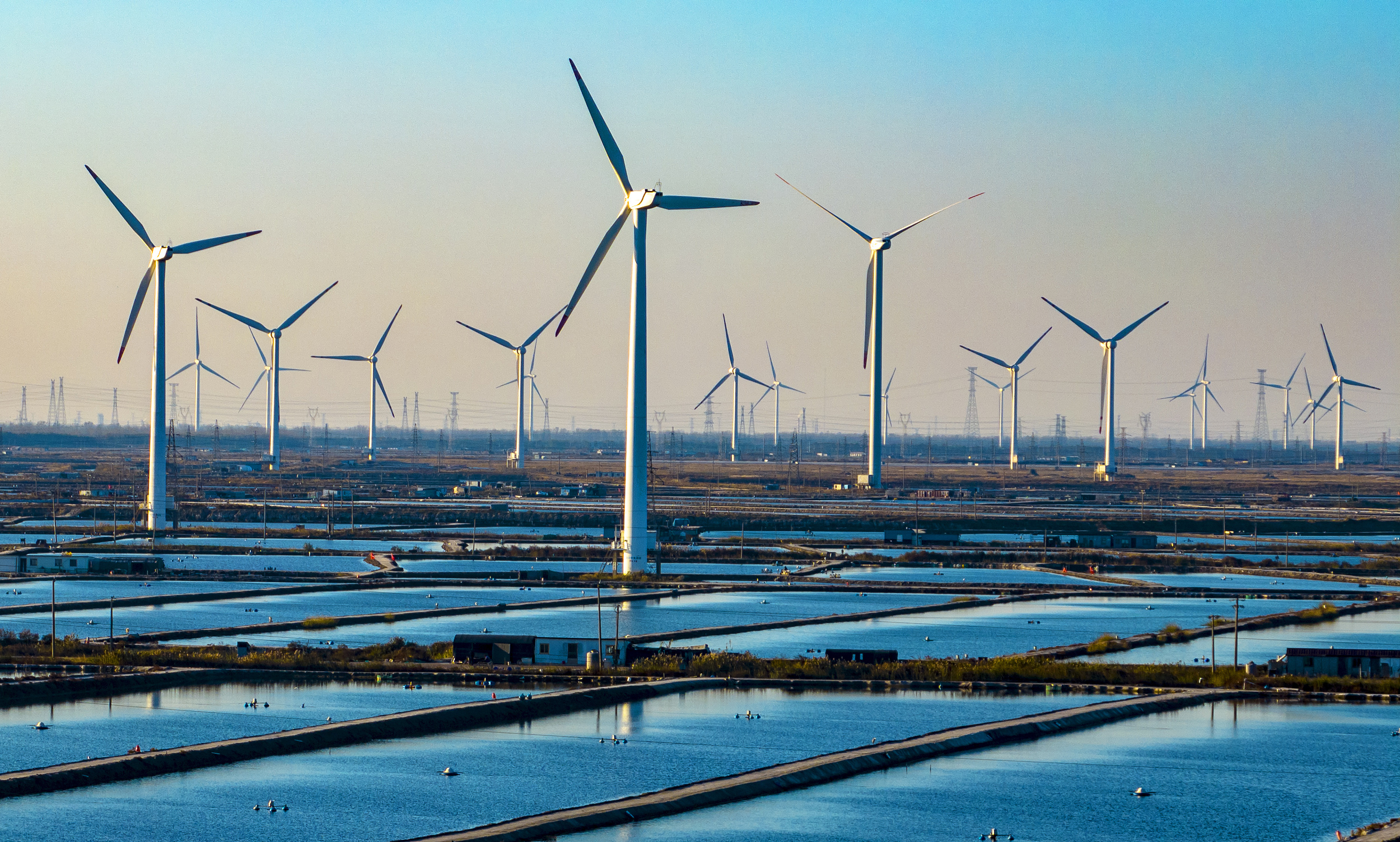Making a Big Push Toward Global Decarbonization

Wind turbines in Yancheng, China's east Jiangsu province, on November 18, 2023. (PHOTO: VCG)
By GONG Qian
The 28th Conference?of the Parties?(COP28) to the United Nations Framework Convention on Climate Change will be?held in Dubai, United Arab Emirates, from November 30 to December 12. COP28 is to?host a critical discussion on the first-ever global stocktake, evaluating collective progress towards the Paris Agreement’s goals.
COP28 is also expected to draw up a?plan?for more?emissions cuts, including reducing the production of fossil fuels such as oil, gas and coal, and increasing the power generation capacity of renewable energy sources.
As a responsible?major country, China has?stepped up efforts to reduce carbon emissions?while?helping?developing countries increase the use of clean energy.
Domestic decarbonization efforts
China has promoted the transformation and upgrading of its energy structure?by making a big push to develop clean energy, so as to transform?its energy structure, and thus reduce?carbon dioxide emissions.?
China has been the world's largest and fastest-growing producer of renewable energy for more than a decade, according to Reuters, which?can be backed up by the numbers behind China's renewable energy boom.
In 2022, China's carbon emissions intensity decreased more than 51 percent from its 2005 level, and the share of non-fossil energy in the country's total energy consumption reached 17.5 percent, according to the 2023 report on?China's policies and actions to address climate change, which was released by the?Ministry of Ecological Environment in late October.
According to data from clean energy think tank Ember, in 2022, China generated 46 percent more wind power than all of Europe. The rapid roll out of wind capacity, along with a more than 27 percent surge in solar generation in 2022 from the year before, helped push China's electricity share from clean energy sources to a record 34.2 percent last year, Reuters reported.
China is forecast to install almost half of all new global renewable power capacity over 2022-2027, as growth accelerates in the next five years, according to analysis from International Energy Agency?(IEA).
This August, the most recent monthly data is available, 97.8 percent of the electricity generated by wind and 98.8 percent of solar power was used, indicating?that?China?is?deploying?its?renewable?energy?effectively, according to The New York Times.
Electric vehicles are the key technology to decarbonize road transport, a sector that accounts for around one-sixth of global emissions, said IEA. China has already chalked up a big win for decarbonization with its push toward electric vehicles, according to Project Syndicate?(PS), an international media organization. The country’s EV uptake is unmatched by any other large economy, said PS. As of August, EVs and hybrids accounted for nearly 40 percent of?the Chinese car market.
Promoting global cooperation on clean energy
In recent years,?China has enabled more developing countries to access clean energy. More clean energy projects jointly carried out by China and host countries have led to fruitful results, with a?number of photovoltaic power stations, wind power stations and hydropower stations being put into operation.?
For example, the Sosian Menengai Geothermal Power Station in Kenya was put into operation in this June. The project is financed and constructed by a Chinese enterprise that signed a contractual arrangement with Sosian Energy, a local private independent power producer. The?project serves?as a model for innovative blending of Chinese capital and technology to promote clean energy access in Kenya, said Venugopal Varanasi, the managing director of Sosian Energy, in an article published on multimedia resource China Global South Project.
Meanwhile in 2020, the Cauchari PV plant?officially launched commercial operations in Argentina.?Developed in phases using Chinese funding and technology, under the Belt and Road Initiative, the plant is?the largest and highest of this kind in South America,?as well as being the world’s highest-altitude solar power project. Located in the country's Jujuy?province,?its 1.2 million solar panels?are expected to supply?the grid with a total of 300 megawatts of generating capacity in its service life of?approximately 20 years.







